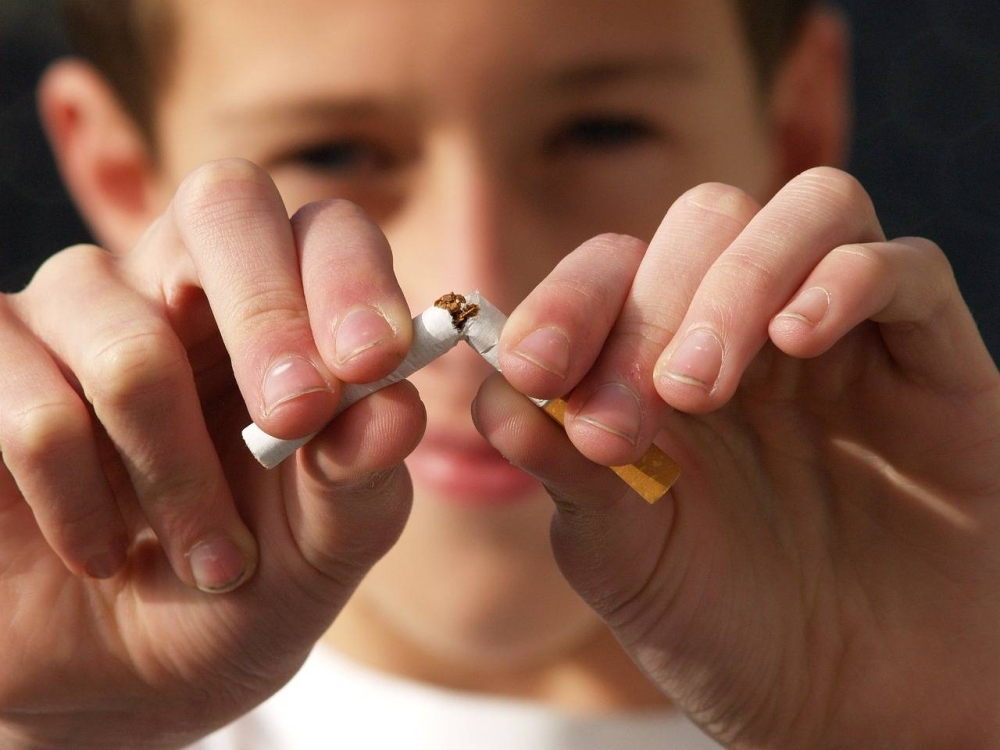Non-smoking women may be affected by lung cancer

KUALA LUMPUR - Non-smoking women may be at risk of lung cancer, said Sunway Medical Centre, Sunway City’s cardiothoracic surgeon Dr Anand Sachithanandan.
He said the majority of cases still involve male smokers but the number of non-smokers who are mostly women, continues to rise.
Based on his own clinical experience, Dr Anand said 25 to 30 per cent of his lung cancer patients are non-smoking women.
"From 2012 until 2016, there were 7,686 cases in men with an age-standardised incidence rate (ASR) of 13.2 per 100,000 of the population. For the same period, there were 3,570 cases with an ASR of 5.9 per 100,000 of the population in women,” he told Bernama at Sunway Medical Centre, Sunway City recently.
He said lung cancer is the most common cause of cancer death in men and second most fatal cancer in women, and that air pollution and second-hand smoke exposure are the culprits coupled with a genetic predisposition.
"Air pollution and exposure to second-hand smoke is thought to create an inflammatory process mediated by chemical messengers called ‘interleukins’ that activates dormant driver mutations or pre-existing cancer-causing genes like the epidermal growth factor receptor (EGFR) mutation in some vulnerable individuals, also, having a family history of lung cancer is a significant risk factor,” he said.
However, Dr Anand said tobacco smoking remains the most common and preventable risk factor for lung cancer and there is growing evidence that vaping significantly increases the risk of taking up cigarette smoking due to nicotine addiction.
"Chronic lung diseases can also cause inflammation and scarring of the lung and a cancer could arise from that scar tissue decades later. We do not know the long-term effects of scarring from a severe COVID lung infection. Less common, is exposure to radon gas or asbestos,” he said.
The doctor said the usual symptoms that people should look out for as an indicator of possible lung cancer include recurrent chest infections, a persistent cough, difficulty breathing, coughing up blood (haemoptysis), chest wall or back pain, and unexplained weight loss, while less common symptoms include shoulder pain or a droopy eyelid.
"All these symptoms depend on the size and location of the tumour. Symptoms like back, chest, or bone pain, unexplained weight loss, or difficulty breathing are indicative of more advanced lung cancer,” he said.
In conjunction with World Lung Cancer Day which falls on Aug 1, Dr Anand, who is also the founding president of Lung Cancer Network Malaysia, shared that screening is essential to spot early-stage lung cancer, which can be successfully treated with curative surgery, sometimes with varying combinations of immunotherapy, targeted therapy, chemotherapy and radiotherapy.
"The gold standard of screening is low-dose computed tomography (LDCT), which is painless, accurate, and a single breath test without needles. However, AI (Artificial intelligence) is currently being explored to improve diagnostic accuracy and may be a useful triage tool. It is being deployed on simple chest X-rays as it is much cheaper, making it more accessible and many practitioners are using it as a pre-screening tool.
"If the AI software detects some abnormality in the lung, the person can be quickly referred to a specialist at a private or government hospital for an LDCT. So, it is one earlier step and we hope to capture traditionally neglected populations of women and non-smokers,” he said.
Dr Anand also recommends current and former smokers aged 45 to 75 who have been smoking at least one pack a day for 20 years or more, even without any symptoms and those with a family history of lung cancer, to go for screening.
"The goal of screening is to effect ‘stage shift or stage migration’ and pick up more cases at an earlier stage when the cancer can be treated more effectively, less invasively and more cheaply with vastly better outcomes,” he said.
Dr Anand said most lung cancer patients require a multi-disciplinary approach, involving various medical specialists' expertise such as radiologists, chest physicians, thoracic surgeons and oncologists, and multi-modal therapy to provide the best chance of a cure and long-term disease-free survival.
Furthermore, he said some (neoadjuvant) treatments are given prior to surgery to reduce the tumour size or eliminate cancer cells in nearby lymph nodes, while other (adjuvant) therapies are given after surgery to achieve local control or to eliminate microscopic disease and reduce the chances of the cancer returning.
"Treatments offered and prognosis are highly dependent on the stage. Stages 1, 2 and carefully selected cases of stage 3a and occasionally, stage 3b are best treated with surgery in combination with other therapies, with the goal of achieving a cure.
"Stages 3c and 4 are typically treated without surgery, with a non-curative intent, focusing on quality of life and prolonging survival,” he added. - BERNAMA










